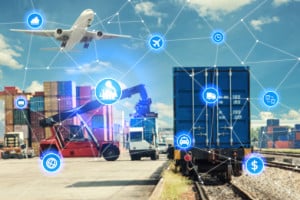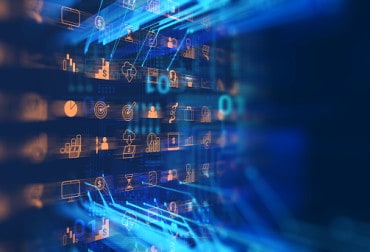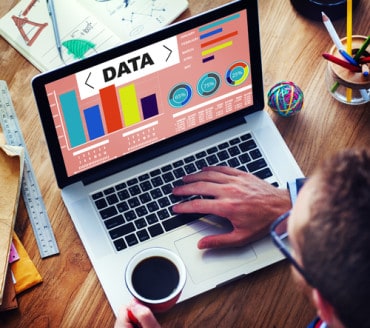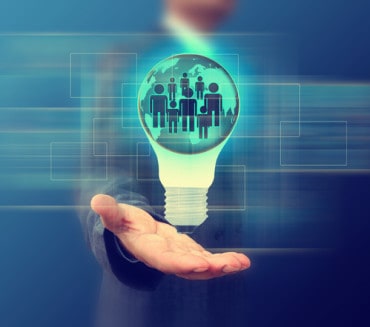
The IoT is making itself known in energy, manufacturing, supply chain analytics, connected vehicles and other areas, but IoT projects still face challenges.
The Internet of Things (IoT) is reshaping business models across just about every sector of the economy – but each sector has its own brand of change. In addition, significant challenges accompany the rise of IoT, such as security issues, and lack of standards. These are among the key takeaways on a new report released by the US Government Accountability Office (GAO), which examined the broader implications of the Internet of Things.
3 Challenges for IoT Projects
Challenges posed by the IoT, as cited by the GAO’s authors, include the following areas:
Security, privacy and safety: “The IoT brings the risks inherent in potentially unsecured information technology systems into homes, factories, and communities,” the report warns. There are privacy concerns as well, since “smart devices that monitor public spaces may collect information about individuals without their knowledge or consent.” In addition, “IoT devices such as connected automobiles and medical devices can be hacked, potentially endangering the health and safety of their owners.” Learn more about IoT security
Interoperability and standards: The report cautions that “interoperability is complex. Manufacturers who would like to create IoT products are often met with constraints, such as costs, lead times, or technical performance that make interoperability difficult. Additional challenges occur when manufacturers want new products to be interoperable with legacy products. As a result, manufacturers are faced with design trade-offs between maintaining compatibility with legacy systems by using the legacy standard and using a different standard that may achieve greater interoperability with other devices.” In addition, the report continues, “while there are many industry-specific standards and best practices that address information security, standards and best practices specific to IoT technologies are still in development or not widely adopted. IoT devices and systems must be able to communicate easily.” Learn more about IoT interoperability and IoT standards
Economic issues. As with any major technology movement, there may be job losses and industry shakeups. “While impacts such as positive growth for industries that can use the IoT to reduce costs and provide better services to customers are likely, economic disruptions are also possible, such as reducing the need for certain types of businesses and jobs that rely on individual interventions, including assembly line work or commercial vehicle deliveries.”
IoT Business Sectors: What’s Working
The GAO authors identified several areas that are at the forefront of the IoT revolution:
Wearable IoT devices: “Data from the fitness trackers are easily shared, allowing for feedback and reinforcement from others. Other wearable IoT devices include clothing, such as IoT-enabled baby clothes that monitor respiration, temperature, and activity levels. IoT-enabled football helmets detect, and analyze impacts and notify medical staff, if needed. Smart glasses that use augmented reality are other examples of wearable IoT devices.” Potential applications may enhance the work of surgeons, mechanics, engineers, and firefighters, the report states.
Smart homes and buildings: “IoT devices can be deployed in both residential and commercial buildings to make resource and energy allocation more efficient and increase security, among other things. Such devices could include smart thermostats and refrigerators, connected security cameras and lighting sensors.” Related: Smart cities
Vehicles: IoT-enabled vehicles “can sense, analyze, and act on information, such as their location, suggested traffic routes, or impending safety hazards. Consumers also benefit from entertainment units in connected cars that can stream music or provide real-time navigation. Through an IoT-enabled data communications system, automobile companies can remotely update the vehicle’s software. Future IoT devices may allow vehicles to connect to each other as well as to transportation management systems. Vehicle-to-vehicle communication, where internal computing systems share data about the vehicle’s status with nearby vehicles, has the potential to enhance safety by reducing the number of accidents on the road that occur as a result of human error.”
Manufacturing: IoT devices can be added to machines and supplies, which “can produce data that are analyzed to monitor process performance, which can improve efficiency and product quality. For example, chemical plants use sensors to measure ingredient mixtures, pressure, and temperature. Chemical plants can then adjust these factors automatically to optimize the process to reliably produce a quality product. Similarly, pulp and paper manufacturers use IoT devices to remotely monitor and control temperature, changing the shape and intensity of the flame in the kiln.” In addition, the report continues, “predictive maintenance uses data analytics on the information collected by IoT devices to predict potential vulnerabilities. Predictive maintenance has allowed some companies to move to a new business model where the manufacturer not only owns, but also maintains the product. In return, the customer is guaranteed the product will be operational for a specified amount of time.” Learn more about the IoT and manufacturing or read about use cases in predictive maintenance or asset performance
Supply chains: IoT-enabled devices have been used in supply chain management since the 1990s, mainly via Radio Frequency Identification tags, the report notes. Now, a range of IoT devices and sensors are helping in “identifying bottlenecks, reducing inefficiencies, and as a result, reducing costs.” Integration of IoT devices enables companies “to address distribution bottlenecks and improve supply management,” as well as “determine exactly how much product is at a location, giving them information needed to improve their restocking program. The shipping process uses IoT devices to measure environmental data, such as temperature, humidity, and pressure.” Related: Use cases in supply-chain analytics
Agriculture: “Some agricultural companies are using IoT devices “to track different facets of the agricultural process. The IoT data inform the company of potential issues while IoT devices enact changes modifying the agricultural process in real time. For example, in the field, sensors take measurements of chemical levels, soil moisture, and air quality. IoT devices also can be used to track similar data in greenhouses, such as temperature and humidity, and transmit that data to farmers via wireless networks.”
Healthcare: “Healthcare IoT devices collect data to improve patient quality of life and safety by enabling patients to self-manage and monitor their health. Aggregating data provide a more complete picture of the patient’s health by identifying trends and problems that may require intervention by patients and health care providers.” In addition, “some hospitals rely on IoT devices to monitor and track patients and equipment. For example, a sensor mat under a hospital bed can track patient movement as well as heart and respiration rates.” Related: Industry insights — healthcare
Energy: “An oil and gas company can use IoT devices to measure multiple data points along a drill line. Information from the devices is used to adjust the speed and pressure of the drill bit when drilling, resulting in an optimization of the process that reduces costs. Smart grids rely heavily on IoT devices to facilitate communication between the energy grid and the building consuming energy.” Learn more about the IoT and energy industry






























